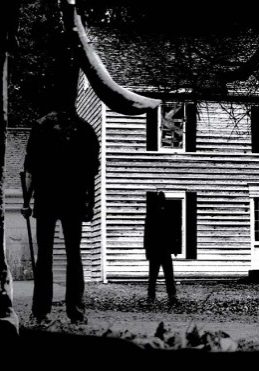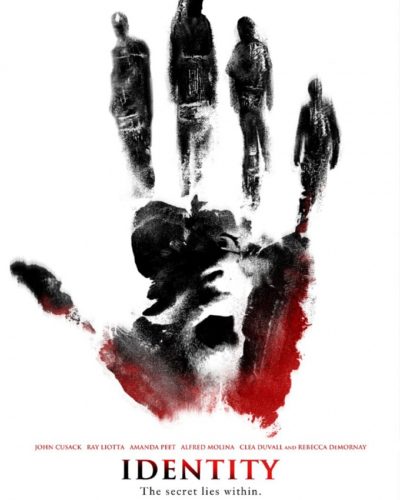Whispered Fears in a Silent Apocalypse: A Review of “Refuge” (2015)
In the desolate echoes of a world abandoned, the 2015 horror film “Refuge” finds its haunted heartbeat. Directed by Andrew Robertson, this post-apocalyptic thriller tosses us into the bleak remnants of society following a devastating pandemic. As we follow a small group of survivors, the film artfully explores the shadows not only around them but within them, presenting a taunt narrative that makes us question which is more terrifying: the seen or the unseen dangers in a crumbling world.
Creating a World of Desolation and Dread
“Refuge” constructs its horror primarily through a skilled manipulation of atmosphere. The film’s rendition of fear is steeped in a foreboding quietude pierced only at crucial junctures by the screams of both its world and characters. The eerie silence that blankets the film sets a tone of anticipation—the horror here loves to whisper before it shrieks. Director Robertson adeptly wields suspense like a slow-turning vice, compressing the audience’s comfort until the air is thin with apprehension.
Building Tension Through Shadows and Sounds
The cinematography of “Refuge” is a testament to the power of visual storytelling in service of horror. With a dusky color palette that drains the world of vibrancy and hope, the camera angles are just as claustrophobic as the narrative itself. Special effects are sparse and serve to intensify the raw, visceral nature of this deteriorating reality, rather than to detract from it. Robertson’s visual style, combining static shots and sudden handheld movements, creates a disorienting effect that contributes to an overarching sense of instability and unpredictability.
The role of the soundtrack and sound effects cannot be overstated. The minimalist score is effectively punctuated with bursts of sound that amplify the tension, propelling the narrative forward. The selective use of silence is one of “Refuge”‘s most potent weapons, as it sets the stage for viewers’ own imaginations to conjure horrors more personalized and terrifying than any visual cue could offer.
Believable Characters Caught in the Crosshairs of Fear
At the heart of “Refuge” are the performances that bring an element of relatable humanity to the film. The characters, though not deeply complex, serve well to anchor the story in a believable struggle for survival. Actors capture the spectrum of terror and resilience with a commitment that grounds the horror in a tangible reality. Their visceral reactions and slowly unraveling psyches add a gripping dimension to the nightmare their characters endure.
Confronting the Horrors both Physical and Psychological
“Refuge” aligns with the psychological horror subgenre but doesn’t shy away from moments of guttural physical impact. This balanced concoction of deep mental fears combined with the threat of bodily harm ensures the film teeters on the edges of multiple horror subgenres without being ensnared by the tropes of any single category. It challenges conventions by entwining the terror of human nature with the horror of situational violence—a commentary on the primal instincts that surface when society’s structures crumble.
The filmmakers’ commitment to this blend of horror is evident in the methods they employ to rattle the audience. Cleverly constructed psychological tension intermingles with unforeseen moments of brutality; this symphony of fear delivers a potent dread that is not quickly forgotten.
Insight and Impact amid the Ruins
Underneath the genre-specific mechanics, “Refuge” poses existential queries about humanity’s resilience and moral compass in the face of extinction. It is in these moments that the film transcends its horror roots to become a mirror on societal anxieties and a contemplation of the human condition. It’s this rich layering of themes that elevates “Refuge” above conventional horror flicks, creating a lingering emotional resonance that outlasts the chills.
Final Thoughts: A Harrowing Trek Through Hopelessness and Horror
Robertson’s “Refuge” is a masterclass in atmospheric tension, wielding its narrative and technical elements to craft a horror film that’s both unsettling and introspective. Its effectiveness as a horror movie lies in its ability to intertwine the fears of the mind with the visceral horrors of reality, resulting in an experience that is as thought-provoking as it is chilling.
Horror aficionados with a penchant for post-apocalyptic settings and those who appreciate a psychological spin to their scares will find “Refuge” particularly appealing. While it echoes themes found in classic horror, this film stands on its own merit, offering a modern reflection of our deepest collective anxieties.
In summary, “Refuge” demonstrates strengths in atmosphere, performance, and thematic depth but may leave those craving non-stop action or gore somewhat unfulfilled. As a critic, I recommend “Refuge” for its introspective approach to the horror genre, noting that its deliberate pace and lean towards the cerebral may not cater to all tastes. Potential viewers should be mindful of the film’s depiction of violence and despair, which, while not gratuitous, are impactful and central to the film’s haunting narrative.




